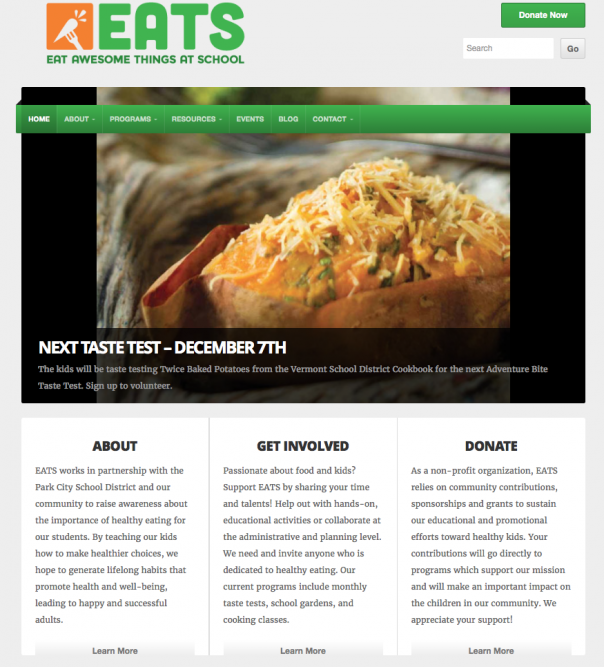
Park City School District in Utah has committed itself to removing 15 unhealthy ingredients from its menus over the next three years. That’s no small feat, especially given that the catering department wants the food to taste the same.
“We strive to provide our students with good-quality nutrition,” says Elizabeth Strasser, director of child nutrition.
“Our goal is to not only provide them with healthy meals, but ones that will sustain them. We also hope to help students develop good nutrition habits, so when they graduate they will have those habits and skills to pick nutritious meals.”
The first ingredients to go, under the 15 To Clean initiative, are trans fats, high-fructose corn syrup, MSG, sucralose and sulphites.
“These were the easiest and most plausible to eliminate, and thus allowed the catering department to raise awareness of what it was doing. The more we have victories, the more we can talk about it,” Strasser says.
“The majority of our food doesn’t contain any of the first five ingredients. So we tried to pick low-hanging fruit to make it easier for the first year.”
The biggest challenge the first year has been high fructose corn syrup, she says, which is in products such as ketchup, tartar sauce and barbecue sauce. Other items she’s had to remove as a result include desserts like fruit cups, whole grain biscuits and some locally made muffins.
In the next two years, targeted ingredients will include saccharine, aspartame, artificial colour and flavour, bleached flour, growth hormones and antibiotics.
“It’s an uphill battle, but we feel it’s something we have to do and it’s all about baby steps,” Strasser says.
This programme is dear to Strasser’s heart. As a registered dietitian, she cares what goes into pupils’ bodies, so when she started with this school district in 2014 and EATS (eat awesome things at school) Park City, a non-profit organisation focused on improving nutrition in schools, approached her, she was on board immediately.
Together with EATS, she put together a task force including a local chef, a teacher and others from the community.
To make changes to the menus, Strasser goes directly to the manufacturers. First, she asks if they can remove the offending ingredient, then she asks if they have a replacement item.
If the answer to both questions is ‘no’, she searches for a product from a different company through her wholesaler. If she can’t find anything, sometimes this just means there are fewer things on offer for lunch — fewer condiments for example.
She has added some new items, but these are often more expensive and add to the cost of producing healthier meals. And Strasser says she expects this to continue, especially when she moves on to the next five or ten ingredients she’s eliminating.
“This may mean raising school lunch prices. But if you have to do that, year two is the year to do it because you can show parents what you have already done,” she notes.
Higher labour costs are also contributing to these costs since more dishes are now made from scratch, and the school district continues to source as much food locally as it can. However, more children are now eating lunch, so revenue is increasing at the same time to help provide economies of scale.
With a new programme like this, it’s been important to get parents on board, as well as the pupils. The school district’s community relations specialist, Molly Miller, has used Instagram and Facebook, as well as emails and newsletters.
She also attended most of the ‘back to school’ nights in the early autumn, and handed out infographics on 15 To Clean.
“I’ve never seen such instant feedback and every single parent was pumped up,” she says. Now the programme has been rolled out, she tries to include updates in the monthly school district newsletters.
To encourage healthier eating at home, the catering department has also converted all of its new recipes – such as twice-baked potatoes, courgette lasagne and Thai turkey tacos – to family sizes so parents can make them.
Park City is not only about removing foods but also adding them. Since the beginning of this term, the catering department has been holding twice-monthly Adventure Bites taste-tests so pupils can evaluate new menu items.
Over the course of this school year, the catering department will offer at least 18 recipes for pupils to try, many of them from local resorts or restaurants. At the first one, the kids sampled the courgette lasagne from nearby Deer Valley Resort. Other dishes have included chilli, avocado salsa (for taco day), and macaroni and cheese with broccoli.
“We run Adventure Bites at all seven of our schools, and if a dish gets a 75% rating or higher, we put it on our menu as soon as we can,” Strasser says.
“We put it on the website, advertise it and ask parents and teachers to come.” These events attract up to 1,500 samplers and are open to everyone. Once children have sampled the food and rated it, they answer two questions using an app. The questions are: Did you like it? Would you eat it at school lunch?
“The primary schoolchildren, in particular, love to try things at the taste test,” says Strasser.
“However, when it comes down to it, the secondary level children are more willing to eat new things. I think the secondary level [pupils] are more receptive because they’ve been having school lunch since first grade.”
A final initiative at these schools, where health is foremost, is new salad bars. The catering department was concerned about waste but started slowly with carrots, broccoli and cucumbers, and will gradually add more adventurous items like lentils, quinoa and kale chips.